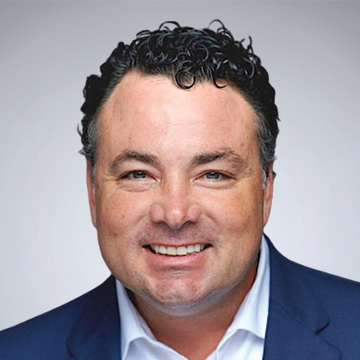It’s 7:30 a.m. and Steve, a successful IT security executive, has five minutes to get his 10-year-old twins into the car and off to school. He runs downstairs from his home office, only to find that the kitchen drawer where he keeps his car keys is empty. This sets off a frantic search throughout the house and eventually leads back to his home office, where the keys were on his desk all along.
What does this have to do with mortgage lending? Everything. These days, many mortgage originators likely feel like Steve, running in all directions to find the product opportunities they’ve lost. After all, nationwide purchase and refinance origination volume have decreased dramatically, and the concurrent rise in interest rates has eliminated many potential homebuyers from the market.
The mortgage originators who have successfully navigated the non-QM space know how to color outside the lines.
Brokers and lenders, however, could begin selling nonqualified mortgages (non-QM) or take steps to increase their non-QM market share. They only need the right resources and expertise. The opportunity is literally on their desks.
Market opportunity
While an increase in self-employment continues to swell demand for non-QM mortgages, it’s common to find mortgage professionals who have never originated a non-QM loan. Today’s non-QM borrowers have strong credit but might not check all the boxes to qualify for a conventional government-backed mortgage.
For example, it can be easier to qualify for a conventional loan by providing a W-2 form to document taxable income. Many potential borrowers, however, are freelancers, gig-economy workers or entrepreneurs who don’t have this traditional documentation.
The U.S. workforce included 16.8 million self-employed people as of June 2022, up 1.4 million over a two-year period, according to a Bloomberg analysis of U.S. labor statistics.
These individuals often have the resources to buy a home but lack connection to a mortgage originator who has confidence in their creditworthiness. They might be part of the real estate investment wave, joining the approximately
10.6 million Americans who draw a large portion of their income from rental properties. These investors may be self-employed or need a loan that exceeds the limits of government-sponsored mortgage ceilings.
These borrowers also could be high net worth individuals who don’t work but who routinely purchase and sell homes to hedge against risks and rebalance their assets. In addition, there are individuals who are recovering from a recent credit impairment and may still qualify to be underwritten with appropriate terms in place.
Qualification scenarios
Qualifying a borrower for a non-QM loan is different than qualifying a borrower using a standard set of products based on a narrow list of criteria for a government-sponsored mortgage. The mortgage originators who have successfully navigated the non-QM space know how to color outside the lines. They have the expertise to use alternative criteria to match responsible, creditworthy borrowers with the appropriate loans for their situation.
Take, for example, a self-employed borrower without a W-2 tax form who provides 12 to 24 months of personal or business bank statements. A non-QM lender could then calculate their qualifying income based on a standard expense factor (e.g. 50%). They also could use a profit-and-loss statement or an expense statement prepared by a third-party tax professional.
An individual investing in a rental property might qualify for a debt-service-coverage ratio (DSCR) loan based on the cash flow generated by their properties, as long as the total rental cash flow equals or exceeds their ongoing expenses (mortgage, taxes and insurance). High net worth individuals, meanwhile, may qualify based on the income from their investments and the value of other assets.
Product flexibility
In addition to enabling more flexible client credentials, non-QM lending opens up a new set of product options and features. Originators must simply commit to mastering the nuances.
Providers of government-sponsored mortgages, for instance, frequently require that borrowers have a debt-to-income (DTI) ratio of 43% or less. With non-QM loans, however, some lenders will underwrite loans for borrowers with DTIs of up to 50%.
Lenders also will manufacture loans for many borrowers whose loan-to-value ratios reach as high as 90%, with no accompanying mortgage insurance requirement. While non-QM lenders are still required to confirm a borrower’s ability to repay the loan, they have more flexibility in how to qualify them.
For originators wanting to expand their offerings into the business-purpose investment market (such as single-family homes and properties with two to four units), a variety of DSCR loans fall under the non-QM umbrella. These products include interest-only options and cash-out solutions to expand liquidity for future investments. These wide-ranging products can increase an originator’s repeat business opportunities as investors seek additional financing to build out their portfolios.
In this inflationary period, mortgage originators competing in the non-QM space also must master a new mindset of selling monthly payments versus interest rates. For example, a prospective borrower who is deterred by current interest rates may be intrigued by a 40-year non-QM loan that allows for interest-only payments during the first 10 years before converting to a 30-year fixed-rate loan.
As an alternative, a self-employed borrower who plans to live in his or her next house for five years might be tempted to rent until they learn about an adjustable-rate non-QM mortgage. This way, they can lock in a comfortable range of monthly payments during this relatively short period.
Essential tools
Given the plethora of non-QM products, how can mortgage originators improve their expertise as quickly as possible? There are some “essentials” that will help get them up to speed.
- Quick prequalification tools to evaluate borrower credentials and property income, and to view a variety of potential product options
- Bank-statement analysis tools to delve into borrower income and cash flow
- Scenario desks staffed by wholesale and correspondent lender partners who can help to evaluate borrower credentials, review potential loan scenarios, analyze appraisal and property data, answer general questions and help structure deals.
It also is valuable advice for brokers to work with lenders that have in-house underwriters with vast experience in the nuances of non-QM loans. As independent mortgage brokers and loan officers move into non-QM lending, they will discover that professional-services providers outside of their current referral base — such as accountants, attorneys, financial planners and wealth managers — are valuable sources of leads and knowledge.
Mortgage brokers and loan officers, too, can educate their professional-services partners on the most recent non-QM trends that may be helpful to their clients. Indeed, success in the non-QM lending world is based both on what originators know and who they know. It’s a matter of noticing the keys to growth that are right in front of them. ●
-
Tom Davis is chief sales officer of non-QM lender Deephaven Mortgage. He joined Deephaven in 2022 and has more than 20 years of experience helping lending partners with their non-QM and agency needs. He holds a bachelor’s degree from Florida Atlantic University, where he double majored in finance and management. Deephaven was founded in 2012 and led the formation and development of the non-QM market. Reach Davis at tdavis@deephavenmortgage.com or visit deephavenmortgage.com.
View all posts





